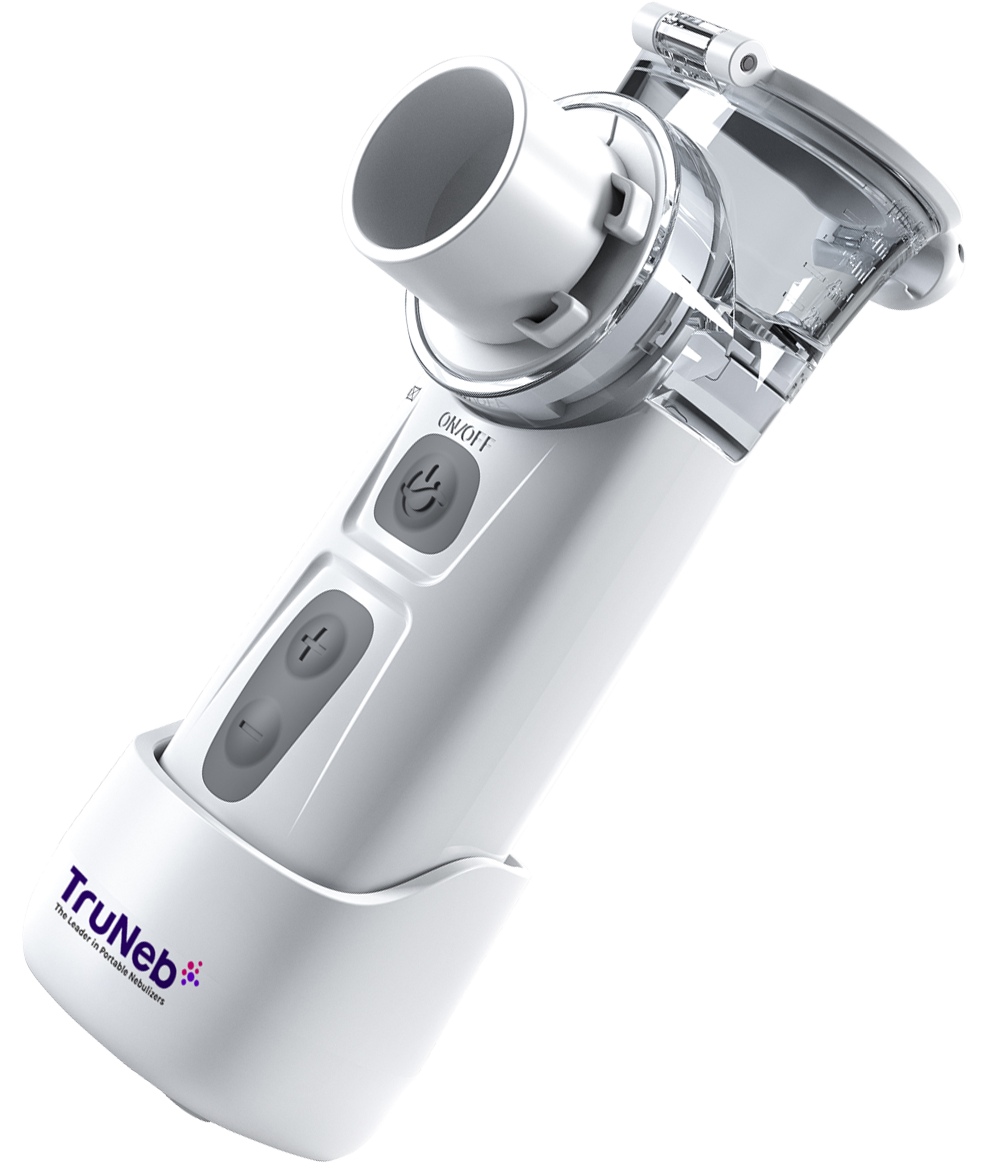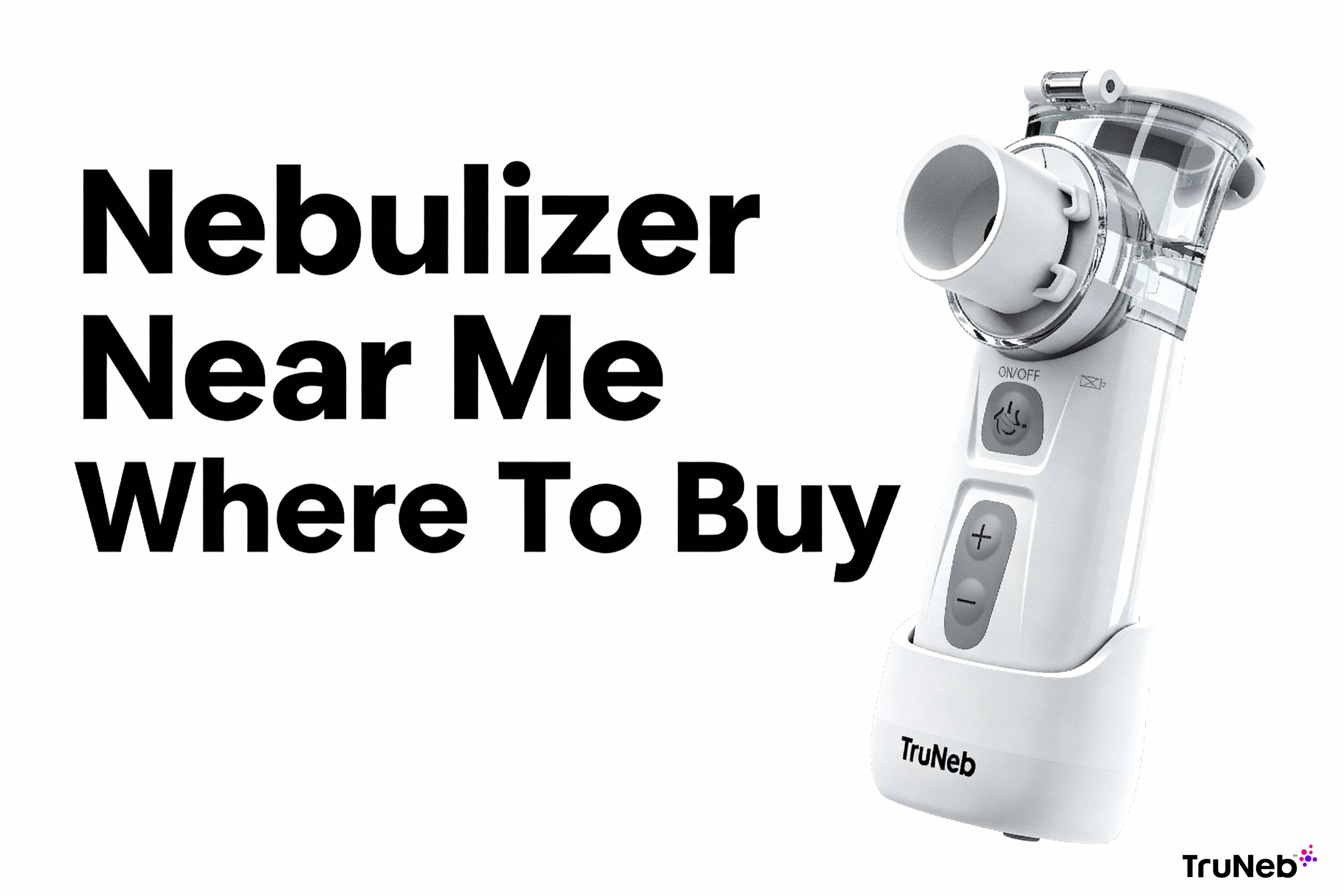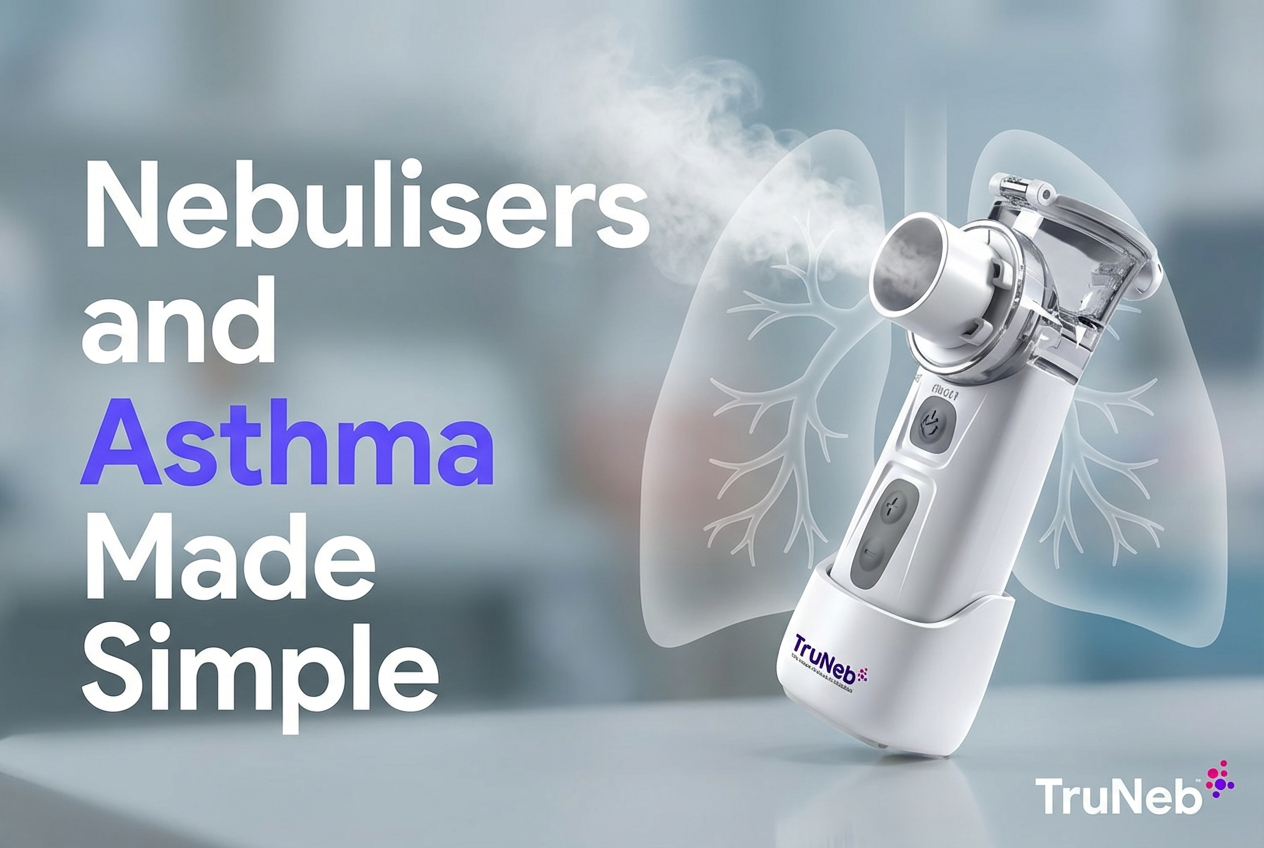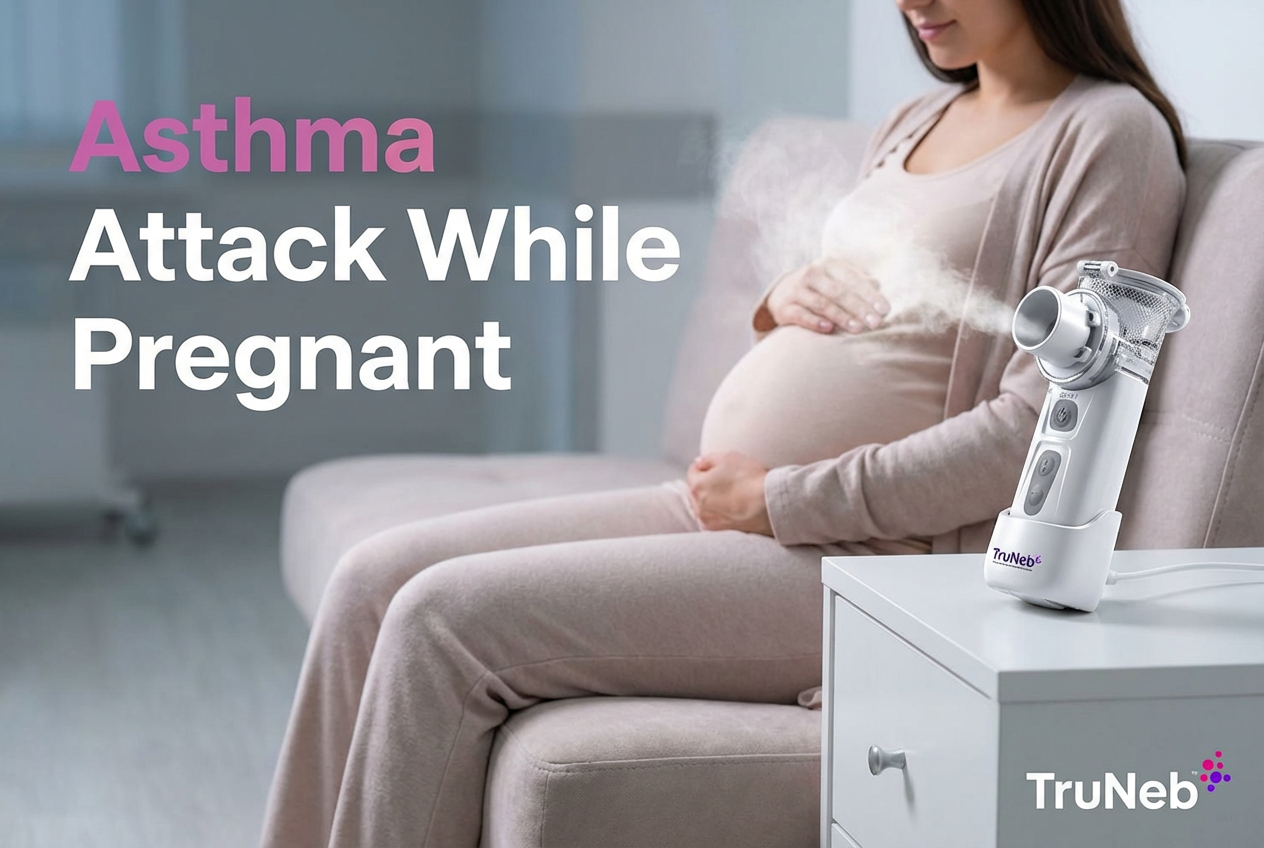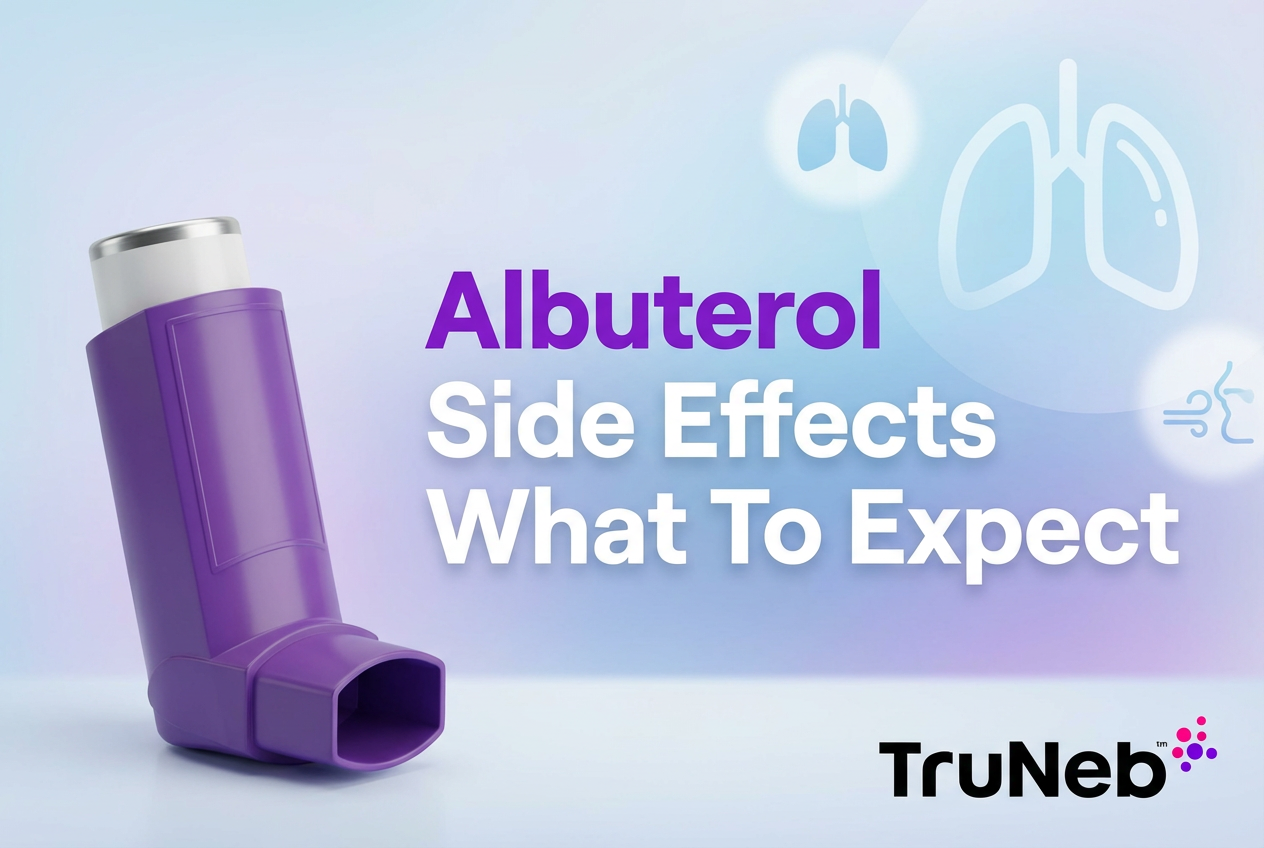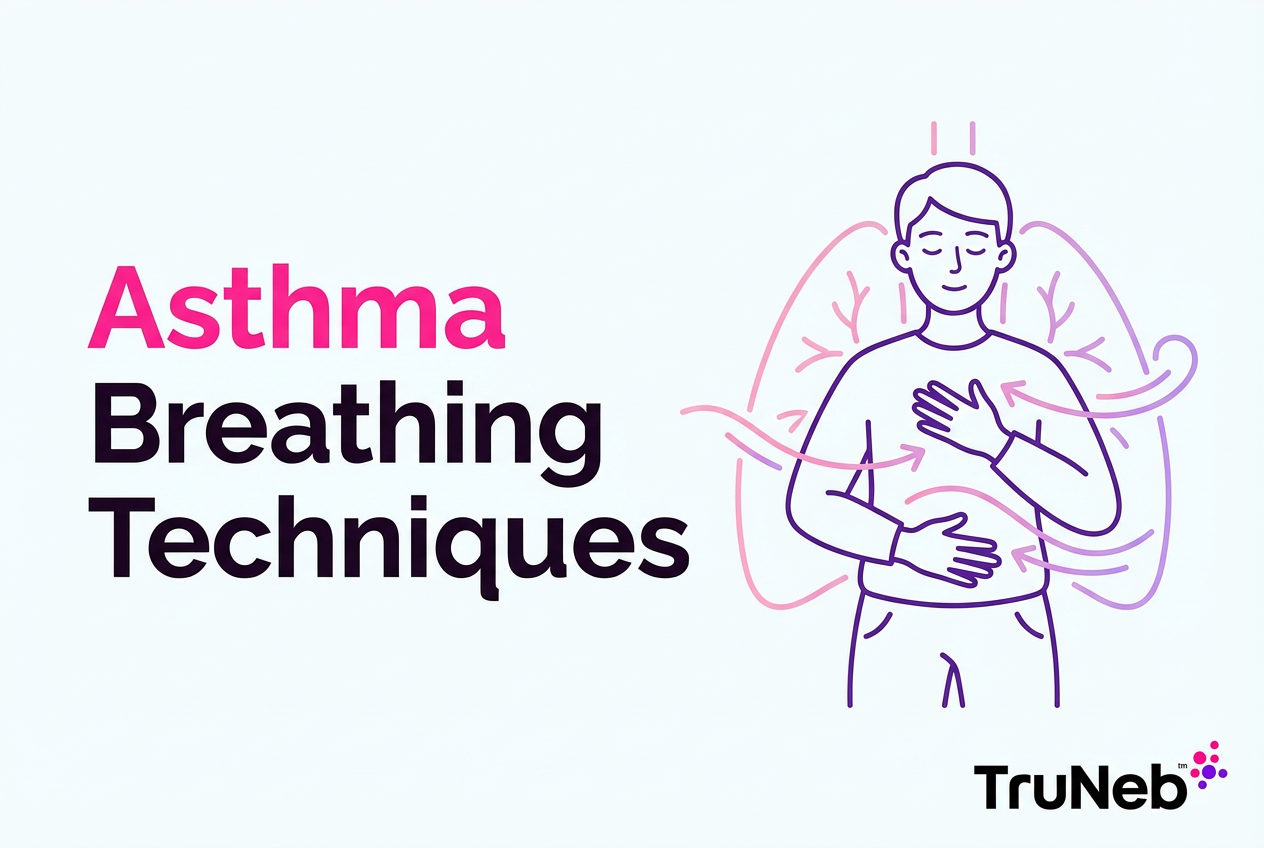On this page

Key Differences at a Glance
Both devices deliver medicine to your lungs. Inhalers give quick puffs you breathe in right away. Nebulizers turn liquid medicine into a mist you breathe over several minutes.
One-line takeaway: Inhalers are fast and portable; nebulizers are easy to breathe from and gentle during flares.
You might see ‘steam inhalers or humidifiers’ near these products. These are not for breathing medications.
| Factor | Inhaler | Nebulizer |
|---|---|---|
| Delivery | Quick spray or powder dose | Continuous fine mist for ~5–10 min[1] |
| Power | None | Electric or battery |
| User technique | Timing and slow deep breath; spacer helps | Breathe normally via mouthpiece or mask |
| Portability | Pocket-sized | Tabletop or handheld mesh units |
| Typical use | Quick relief and daily control meds | Useful for young children, older adults, or severe flares |
| Cleaning | Clean mouthpiece; rinse spacer weekly | Rinse after each use; disinfect regularly |
[1] Typical session time varies by device and dose.
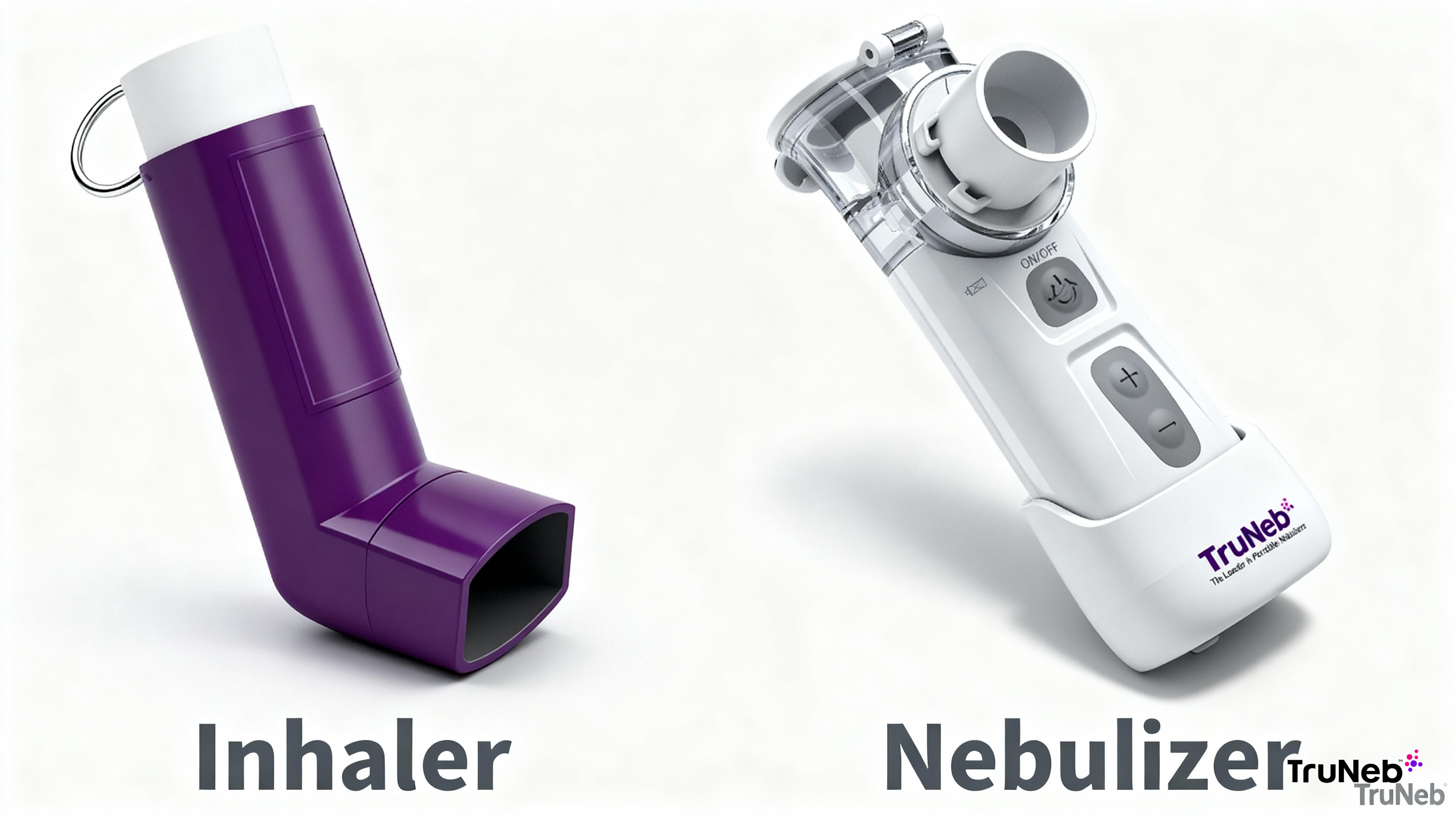
What Is a Nebulizer and How It Works
A nebulizer turns liquid medicine into a fine mist you breathe in through a mouthpiece or mask. A session usually takes 5–10 minutes. It’s commonly used for asthma, COPD, and lung infections. Parts include a cup for medicine, tubing, and a power source.
Types of nebulizers
- Jet nebulizer: Uses compressed air; common tabletop style.
- Ultrasonic nebulizer: Uses sound waves; quiet; can warm the solution slightly.
- Vibrating mesh nebulizer: Pushes liquid through a tiny mesh to make very fine droplets; small and battery-powered.
Mesh nebulizers are the most portable option today.
One-line takeaway: A nebulizer turns liquid medicine into a fine mist you breathe over 5–10 minutes.
What Is an Inhaler and How It Works
An inhaler (often called a puffer) is a handheld device that gives a quick dose of medicine to your lungs. Most are metered-dose inhalers (MDIs) that spray medicine when you press the canister. Others use dry powder you breathe in, or a slow soft mist.
Types of inhalers
- Metered-Dose Inhaler (MDI): Press-and-breathe; typically used with a spacer to improve delivery.
- Dry Powder Inhaler (DPI): Breath-powered; you inhale fast and deep. DPIs require a fast, deep breath and aren’t ideal for small children or anyone who can’t inhale forcefully.
- Soft Mist Inhaler (SMI): Releases a gentle mist; timing is easier for some people.
Key point: Technique matters with inhalers. A spacer can make MDIs much easier to use.
One-line takeaway: An inhaler delivers a quick, measured dose to your lungs but works best with proper technique.
How to Use a Nebulizer (Step-by-Step)
- Wash your hands.
- Add the prescribed medication solution to the nebulizer cup.
- Connect the tubing and attach the mouthpiece or mask.
- Sit upright. Place the mouthpiece in your mouth and seal your lips, or fit the mask snugly.
- Turn on the machine. Breathe normally through your mouth until the mist stops (about 5–10 minutes). Take a slow deep breath every few breaths if you can.
- Turn off the device.
- Rinse the cup and mouthpiece/mask with warm water. Air-dry on a clean towel. Disinfect on a regular schedule per the manual.
Follow the instructions that come with your device and your prescription.
One-line takeaway: Clean and dry the parts after each treatment to prevent germs.
Talk to your doctor before trying a new medication, changing your dose, or switching devices. Follow your asthma or COPD action plan.
⚠️ Warning: If you have severe trouble breathing, chest pain, bluish lips/face, confusion, or symptoms that don’t improve after rescue treatment, seek emergency care immediately.
Talk to your doctor if your symptoms don’t improve, you’re using your rescue inhaler more than directed, or you want to switch devices.
How to Use an Inhaler (With Spacer Tips)
- Prime a new MDI as directed on the label before first use.
- Shake the inhaler (MDI) for 5 seconds.
- Remove the cap and check the mouthpiece.
- Attach a spacer if one is prescribed.
- Breathe out fully.
- Place the mouthpiece (or spacer) in your mouth and seal your lips.
- Press the inhaler once as you start a slow, deep breath in.
- Keep breathing in for 3–5 seconds.
- Hold your breath for 5–10 seconds, then exhale slowly.
- If your doctor has instructed more than one puff, wait 30–60 seconds between puffs.
After steroid puffs, rinse your mouth to help prevent thrush.
One-line takeaway: Using a spacer with an MDI makes timing easier and improves delivery.
Nebulizer vs. Inhaler: Pros, Cons, and Effectiveness
- Inhaler pros: Pocket-sized, fast to use, no power needed, great for quick relief.
- Inhaler cons: Technique matters; timing press-and-breathe can be hard without a spacer.
- Nebulizer pros: Easy to breathe normally; helpful for young children, older adults, or during bad flares; can mix certain meds in one treatment (for example, albuterol plus ipratropium when prescribed).
- Nebulizer cons: Takes longer, needs cleaning and power; bulkier unless you use a portable mesh unit.
Effectiveness: Studies and doctor guidance show that when used correctly, inhalers (with a spacer) can work as well as nebulizers for many situations. Side effects (like albuterol jitters or steroid mouth thrush) come from the medication, not the device.
Cost & Access
Nebulizer devices typically cost more up front and have parts to replace over time, while inhalers are compact and the ongoing cost is in medication refills. In the U.S., medications are prescription-only, and insurance usually requires a prescription to cover devices and medications.
One-line takeaway: When used correctly, an inhaler with a spacer can work as well as a nebulizer for many situations.
When to Use a Nebulizer vs. an Inhaler
- Infants and young children: A nebulizer is usually easier because they can just breathe normally with a mask.
- Older kids and adults (good technique): An inhaler (typically with a spacer) fits daily life and quick relief.
- Severe symptoms or urgent care: A nebulizer can help when breathing is hard or repeated dosing is needed. In mild to moderate attacks, an inhaler with a spacer can work just as well.
- Daily controller therapy: Inhalers are usually preferred for long-term control. Some people use nebulized steroids like budesonide when prescribed.
- COPD: Plenty of people with COPD use both. Inhalers for routine use; a home nebulizer during flares or if coordination is tough.
- On the go: Inhalers are fastest in public. Portable mesh nebulizers can bridge the gap when you need a nebulizer away from home.
If inhaler coordination is tough, an inhaler with a spacer is a common alternative to a nebulizer for mild-to-moderate symptoms.
One-line takeaway: The best device is the one you can use correctly, consistently, and as your doctor recommends.
Device Care and Maintenance Tips
- Nebulizer care: Rinse the cup and mask after each use and air-dry. Disinfect parts regularly (for example, daily or a few times per week) per the manual. Replace filters and parts on schedule. Clean gear helps prevent infections.
- Inhaler care: Keep the mouthpiece clean and dry. Check the dose counter if present. Wash spacers weekly with mild soap and let them air-dry.
Clean gear works better and is safer.
Frequently Asked Questions
Tap or click a question below to see the answer:
When used correctly, both can work equally well. Choice depends on your ability, age, and the situation.
It depends on the specific medication and strength. Don’t self-convert; follow your doctor’s instructions.
Yes. Lots of people use an inhaler daily and keep a nebulizer for flares. Use them as prescribed and not at the same time for the same dose unless directed.
In the U.S., inhaler and nebulizer medicines require a prescription. The nebulizer device may be bought without one, but insurance typically requires a prescription to cover it.
No. A nebulizer delivers medication as a mist. Steam inhalers and humidifiers add moisture to the air and aren’t for breathing medications.
Why Choose the TruNeb™ Portable Mesh Nebulizer
If you want the ease of a nebulizer with the grab-and-go feel of an inhaler, a portable mesh unit can help. The TruNeb™ portable mesh nebulizer is small, quiet, and battery-powered, so you can take treatments away from home. Its fine mist helps medicine reach deep into your lungs, and the simple design makes cleaning fast.
How it helps your day:
- Portable: Fits in your hand or bag.
- Quiet: Easy to use around kids or at night.
- Simple: One-button start; quick rinse after use.
A portable mesh nebulizer like TruNeb combines the ease of a nebulizer with on-the-go convenience.
Learn more on the TruNeb Portable Nebulizer product page.
Conclusion and Key Takeaways
- Use what you can use well. Inhalers are fast and portable. Nebulizers are easy to breathe from and helpful during flares.
- Effectiveness depends on technique. An inhaler with a spacer can work as well as a nebulizer for many people.
- Care matters. Clean and maintain your device so it works when you need it.
If you’re unsure which device fits your plan, ask your doctor to review your technique or device choice.
Use what you can use well, keep it clean, and check with your doctor if breathing control isn’t where you want it.
Disclaimer: This article is for informational purposes and isn’t a substitute for professional medical advice. Always talk with your doctor about your health and treatments.

